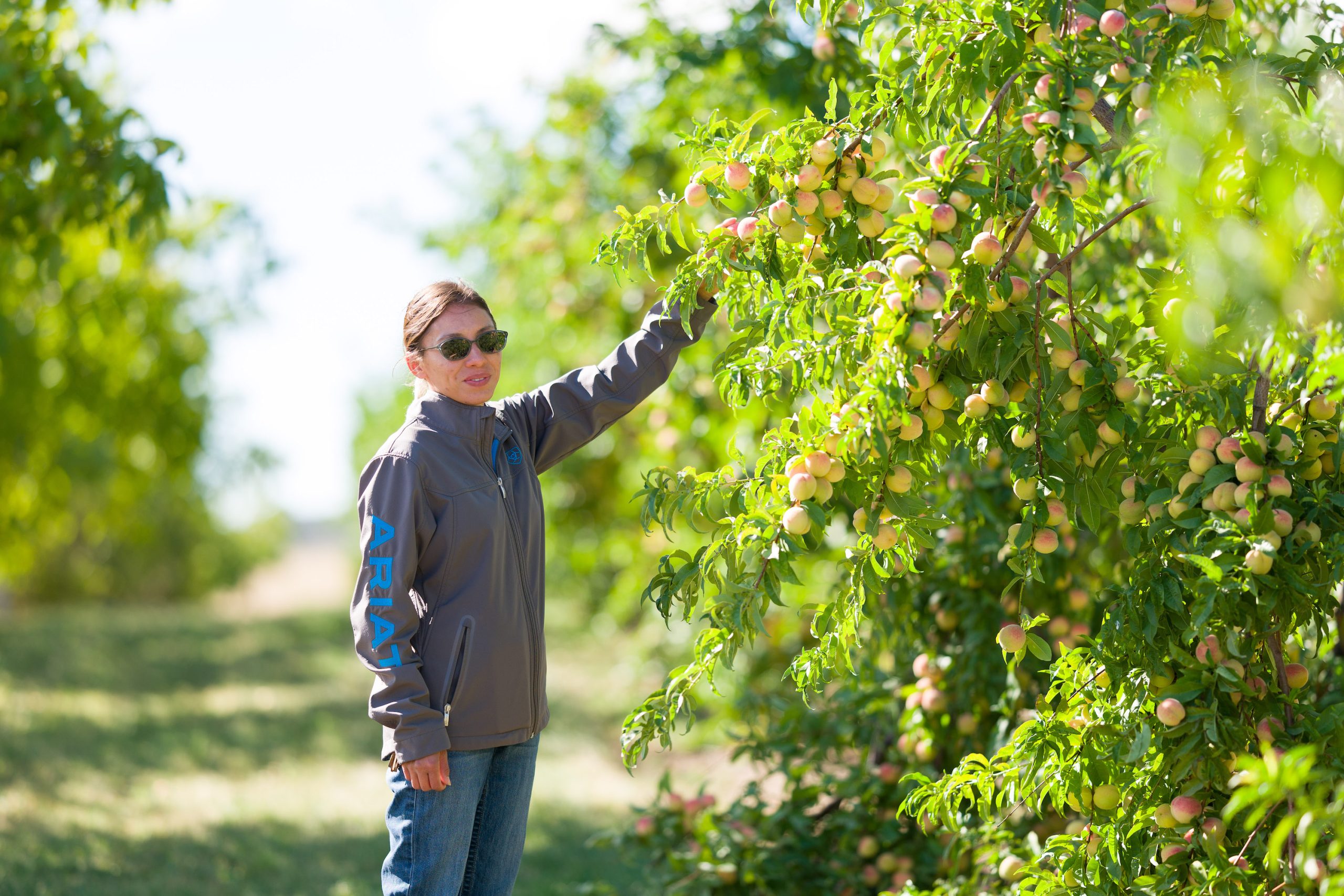Some information may be outdated.
This week, we talk with Reagan Wytsalucy about traditional foods on the Colorado Plateau. Wystalucy is actively working to reestablish traditional food crops, specifically looking at peaches as the first food crop to identify and bring back to Four Corners communities.
Science Moab: What drew you to peaches specifically?
Wytsalucy: I didn’t fully understand the importance of the peach tree when I started the research, but there has been curiosity in my mind as I remembered some of the things that my dad would talk about. When he first brought up that we grew peaches, I was so intrigued. The first time that he took me to Shonto [a community on the Navajo Nation -ed.], he showed me where they had their farms and where his dad and mom planted their crops and garden. The fruit trees were in the back alongside where this canyon wall was. When we go there, the only thing that’s there now is Russian olive trees. People in the community, as I started to search and look for the peach trees themselves, said they remembered peach trees long ago but there are none now.
I started looking for literature to see what historical information there is on fruit trees grown in the southwest regions by Native American tribes and came to find a recently published document produced for the Hopi Nation about its vast orchards. In that publication, they mentioned that less than 2% of the original orchards or the fruit trees remained. I started using it in my early research, and it became an adventure to be able to understand my family history: where I come from and where my ancestors roamed and worked.
Science Moab: How are fruit trees able to survive in this relatively harsh environment?
Wytsalucy: These types of peaches are more drought tolerant. Traditionally, they have been planted in sites where they would be collecting only annual precipitation and any water that would run off from mesa tops or canyon walls would ideally flood into these orchard spaces. The same thing took place with garden spaces since the gardens were often planted around the orchards.
I worked with multiple tribes including the Hopi, Zuni, and Navajo to do this research, and each tribe had unique practices of their own. We have a lot of clay soils in the area, and the trees seem to be readily adaptable to that, as well as the harsher temperature changes on a daily basis. The elders that traditionally cared for them mentioned that they never irrigated them. There was complete trust in what Heavenly Father was going to offer for any given season. And they produced and became an abundant food resource. These trees have been planted in closed-off areas or areas where the wind is not so harsh, and they have a lot of radiating heat coming off of the canyon walls where they’re planted in. That helps buffer the air temperature to help prevent frost occurrences from killing all the flowers.
Science Moab: So what does your research look like?
Wytsalucy: I got support in searching for these trees, for the seed sources. We wanted to see if any of their genetics were unique, so we did genetic studies. We also look at the history of how the trees were managed, talk to the elders, and document their stories. As we started studying this tree, we started to look at how we can preserve all of this history to be a resource to give back. The last thing that we did was do a full nutrient study on the peaches. We compared them to the USDA standard food nutrition label for fresh peaches and found out that they’re higher in calcium, they have more fiber, and they’re higher in fats and calories. And there were a few things that weren’t changed, like sugar and potassium. We saw that these are a bit more of a benefit to the diet.
Science Moab: What future do you see for traditional foods in this region?
Wytsalucy: We learned that these peaches are genetically different from others, so we want to try and keep that genetic resource alive and thriving, not diluted. We have seen some of the seeds that we’ve collected have been cross-pollinated with modern cultivars, and we can see that in their genetic makeup. I also want to make these peaches an abundant food resource in our communities again, like they once were. I want to protect the growers that currently still have them. They are in their elder age and this is their way of living and what they live off of. I want to make sure that as these trees are distributed, they’re used in an appropriate manner that is culturally respectful to our communities. Ultimately, we’d love to have orchard spaces that would be a space for educating our youth and for community gatherings, and then eventually giving back that seed to them with resources on how to grow them so that one day, we’ll have full orchards again.
Science Moab is a nonprofit dedicated to engaging community members and visitors with the science happening in Southeast Utah and the Colorado Plateau. To learn more and listen to the rest of this interview, visit www.sciencemoab.org/radio. This interview has been edited for clarity.
Appreciate the coverage? Help keep local news alive.
Chip in to support the Moab Sun News.





